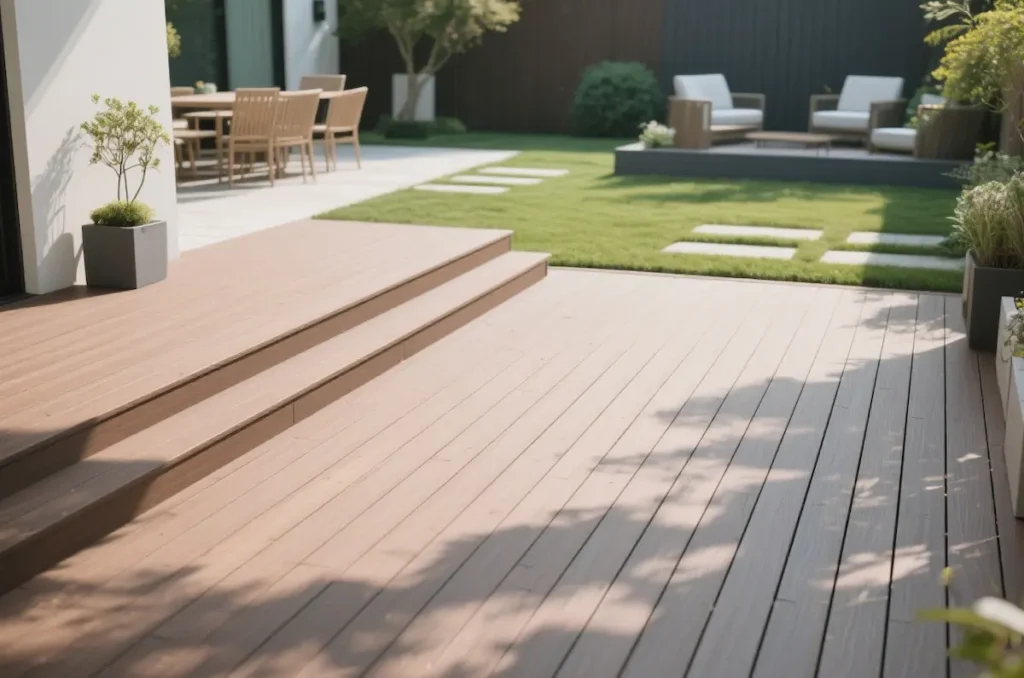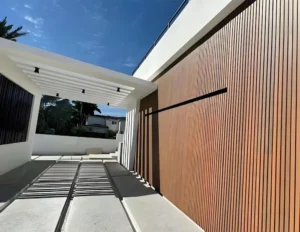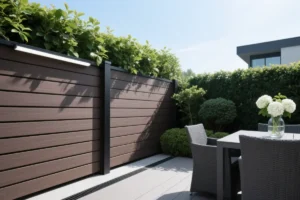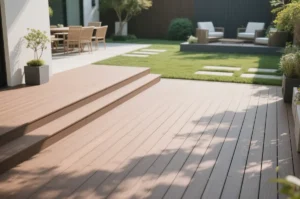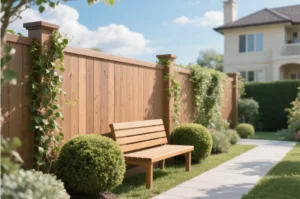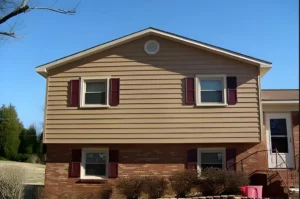Why Annual Checks on Deck Matter
A deck is one of the most valuable additions to any home, offering a dedicated space for relaxation, outdoor dining, and family gatherings. However, to ensure its long-term safety and durability, conducting annual checks on deck is essential. Regular checks allow homeowners to identify potential hazards early, address maintenance needs promptly, and prevent minor issues from turning into costly repairs.
Whether your deck is newly built or has endured years of seasonal weather, thorough checks help maintain structural integrity and overall safety. For older or larger decks, hiring professional checks on deck services is strongly recommended, as experts can spot hidden risks that may not be obvious to the untrained eye.
Essential Tools for Checks on Deck
Before starting the process, gather the necessary tools to ensure accuracy and safety. A complete set of checks on deck typically requires:
- Flashlight
- Measuring tape
- Level
- Screwdriver
- Hammer
- Pry bar
- Moisture meter
- Safety gear (gloves and safety glasses)
These tools help you evaluate your deck’s surface, structure, and hardware while minimizing the chances of overlooking potential problems.
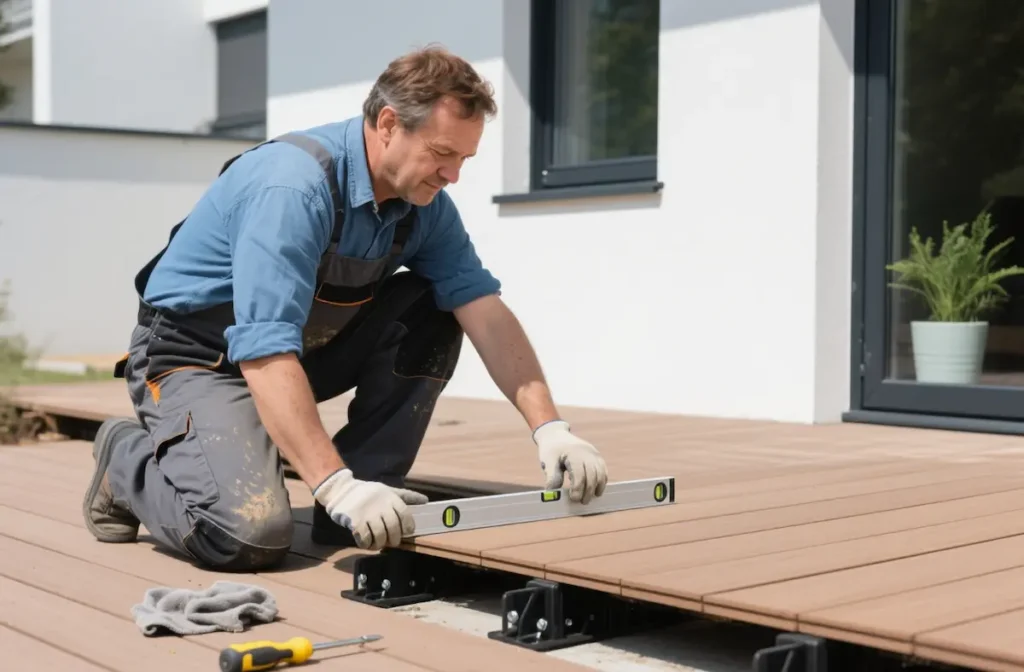
Key Areas for Checks on Deck
When performing annual checks on deck, it’s important to review all the main parts of a deck, including the surface, substructure, railings, stairs, and footings. Each component plays a vital role in the overall safety and durability of your outdoor space.
1. Surface Checks on Deck
The deck surface includes floorboards, railings, stairs, and fasteners. Checking these areas regularly helps maintain both safety and appearance.
Common surface issues:
- Mold, mildew, or algae growth that creates slippery spots.
- Cracks, splits, or warped boards.
- Insect damage or signs of wood-boring pests.
- Loose or protruding nails and screws.
Routine cleaning and sealing can significantly extend the lifespan of wood decking. For composite decking, simple washing with soap and water is usually sufficient.
2. Substructure Checks on Deck
The substructure—foundations, posts, and joists—provides critical support for the entire deck. Any weakness in this area directly affects stability.
Common structural problems:
- Weathering: Prolonged exposure can weaken wood fibers.
- Rotting: Excessive moisture leads to decay and instability.
- Fastener issues: Loose, rusted, or corroded connectors weaken the frame.
Regularly check for sagging joists, shifting beams, and unusual movement when walking across the deck.
3. Checks on Deck Footings and Posts
Footings and posts anchor the deck securely to the ground. Proper drainage around these areas prevents water pooling, which otherwise promotes rot and insect activity.
Checklist:
- Look for rotting or crumbling wood at the base.
- Check for insect infestations such as termites or carpenter ants.
- Ensure posts remain upright without warping or leaning.
4. Checks on Deck Joists and Framing
Joists and framing distribute the load across the deck. If these elements fail, the entire structure may become unsafe.
Key points to check:
- Signs of rot or insect damage.
- Uneven or sagging joists.
- Secure fasteners and proper attachment to beams.
- Adequate spacing between joists to avoid excessive board flexing.
5. Flashing and Water Management Checks on Deck
Flashing protects the connection between the deck and the house, preventing water infiltration that could damage both structures.
Potential issues include:
- Stains or discoloration around flashing areas.
- Improperly installed or missing flashing.
- Loose or corroded fasteners.
Good drainage and water management extend the deck’s lifespan and protect your home’s foundation.
6. Checks on Deck Railings and Guardrails
Railings are vital safety features that prevent accidental falls. An unstable railing poses a serious risk, especially for children and elderly family members.
Inspection guide:
- Check for sturdiness and secure attachment.
- Look for cracks, rust, or wear.
- Ensure deck railing height meets local building codes (typically 36–42 inches).
7. Checks on Deck Stairs
Deck stairs must be safe and structurally sound to avoid accidents.
Safety considerations:
- Ensure consistent tread spacing and proper riser height.
- Inspect for loose steps, rotting wood, or weakened handrails.
- Confirm overall stability by applying pressure to the railing and steps.
Material-Specific Checks on Deck
Composite Decking
Composite decking is a popular alternative to wood, valued for its durability and low maintenance.
Features and maintenance tips:
- Requires minimal upkeep compared to wood.
- Simple cleaning with soap and water maintains appearance.
- Resistant to rot, splintering, and insect damage.
Advantages over wood decking:
- Longer lifespan with fewer repairs.
- Retains color and structure with less fading.
- Eco-friendly, often made from recycled materials.
Wood Decking
Wood decking delivers a natural and timeless look but requires more frequent care.
Vulnerabilities:
- Susceptible to water damage and insect infestations.
- Needs sealing, staining, or painting every 1–2 years.
Checklist for wood decks:
- Look for signs of rot, discoloration, or soft spots.
- Check for pest infestations.
- Ensure coatings are intact for moisture protection.
Regular sanding, sealing, and staining are essential to keep a wood deck structurally sound and visually appealing.
Professional Checks on Deck
For aging decks or complex structures, hiring professional checks on deck services is highly recommended. Professionals can identify hidden structural problems and provide tailored repair or upgrade suggestions.
Benefits include:
- Comprehensive evaluation of deck safety and performance.
- Expert advice on repair, reinforcement, or replacement.
- Peace of mind knowing your deck meets building standards.
Conclusion
Maintaining a safe, durable deck requires consistent care and timely checks. An annual checks on deck routine helps you catch small problems before they escalate, ensuring your outdoor space remains enjoyable and secure.
For wood decking, pay extra attention to moisture, insects, and surface wear. For composite decking, focus on cleanliness and occasional checks for damage. When in doubt, consult professionals who can guarantee your deck’s long-term safety and performance.
By staying proactive with checks on deck and regular maintenance, you protect your investment and create a secure, welcoming space for family and friends.

